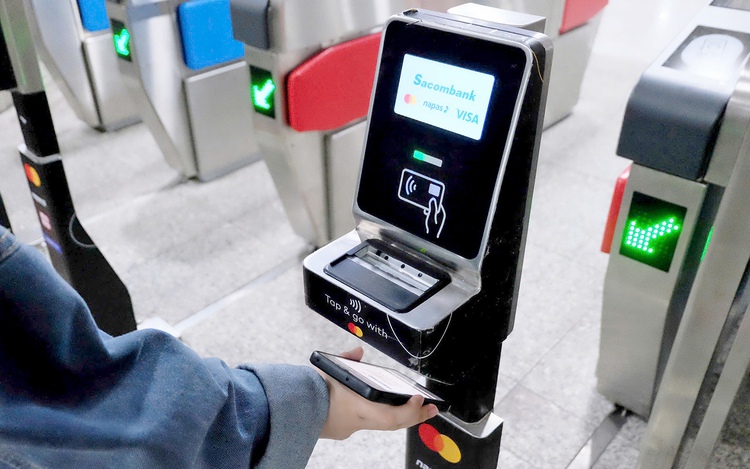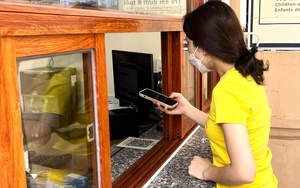
A passenger pays fare by tapping their phone at Ben Thanh metro station in District 1, Ho Chi Minh City. Photo: Phuong Nhi
The Ho Chi Minh City Public Transport Management Center said authorities are working to integrate electronic payments across all public transport modes by the second quarter of 2025.
On bus route 36 and Metro Line 1, most commuters now use bank cards or e-wallets to tap and pay at entry gates, eliminating the need for cash use.
A quick scan of a Mastercard, Visa, Napas card, or a digital wallet such as MoMo is enough to complete payment within seconds.
According to officials, more than 80 percent of passengers at Ben Thanh Station, a major stop on Metro Line 1, now use cashless payment.
Users can also pay via the HCMC Metro HURC app using QR codes.
Ngoc Vu, a university student, said he uses his HD Bank Vikki Go card to travel on both metro and bus systems, and hopes to see more incentives for multi-modal daily commuters.
Thanh Son, a resident of Thu Duc City, part of Ho Chi Minh City, said the upgrade has significantly improved public transport services.
"The cashless system is faster and more convenient," he said.
"I no longer have to worry about carrying small denomination banknotes."
He also suggested expanding payment options, including using Vietnam's national ID card.
City leads in digital transit payments
Officials say Ho Chi Minh City is leading Vietnam in the adoption of electronic fare systems.
As of April, three major public transport operators—Saigon Passenger Transport JSC, Saigon Public Transport Co., Ltd, and Transport Cooperative No. 26—had deployed contactless payment across 29 bus routes with 514 vehicles.
Additionally, Phuong Trang FutaBuslines has introduced card payment on 33 routes with 377 buses.
In total, 62 subsidized routes with 891 buses now support digital payments, and the system will continue expanding throughout 2025.
All new bus service contracts now require contactless payment equipment.
Authorities are also reviewing potential fare discounts and other incentives to encourage digital adoption.
The system follows the EMV OpenLoop model, a global contactless payment standard that allows passengers to use their own bank cards or mobile wallets directly, eliminating the need for separate transit cards.
The goal is to increase accessibility to public transport for all users, including international visitors and foreign residents accustomed to digital payments.
Authorities also aim to reduce private vehicle use, ease congestion, and improve air quality.
Cashless payment incentives
Some financial institutions and card issuers are rolling out promotional offers to increase adoption.
Mastercard, for example, offers discounted or free fares on designated days, including free metro rides and reduced bus fares.
Sacombank has launched the Mastercard MultiPass, targeting frequent commuters such as students and office workers.
The card offers fixed fares—VND5,000 (US$0.2) per bus ride and VND10,000 ($0.4) for metro rides—as well as additional discounts for multi-ride passes.
The city sees the new system not only as a convenience for passengers but also as a tool to collect data to better manage and plan its public transport network.




Max: 1500 characters
There are no comments yet. Be the first to comment.